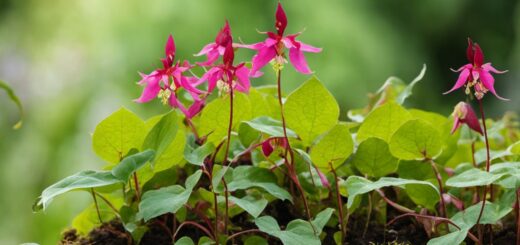Mastering Barberries: A Comprehensive Guide to Cultivating and Using the Barberries Plant
Welcome to a comprehensive journey into the enchanting world of barberries. As blossoming enthusiasts or seasoned hobbyists, you may find yourselves captivated by the intricate beauty and versatile utilities of this intriguing plant. In this discussion, we delve into the heart of understanding the barberries plant, its origins, characteristics, and definitive qualities. Following that, we unravel the process of planting and growing these vibrant cultivars. With a deeper dive, we explore the array of health benefits and culinary uses that make barberries an indispensable part of various cuisines. And to complete the circle, we look into the potential of these plants in changing the face of landscaping and decoration, breathing life into gardens, patios, and indoor spaces.
Understanding the Barberries Plant
Understanding the Barberries Plant
The barberries plant, also known as Berberis, belongs to the family Berberidaceae and is a large genus with nearly 500 species. Originating from regions in Europe, Asia, Africa, and the Americas, these plants are known for their adaptability to grow in various climates and soil types. Barberries plants have simple, deciduous or evergreen leaves that are alternately arranged on leaves. Their foliage color varies from species to species, ranging from bright green, yellow, red to purple.
Characteristics of the Barberries Plant
These hardy shrubs typically have a prickly texture and have three-spined leaves growing off their branches. The plant flowers in the mid to late spring, producing clusters of small blossoms in colors ranging from yellow to red. Following flowering, it produces small, oblong-shaped fruits. The fruits, or berries, are edible and are typically a bright red in color when ripe.
Growth Habits of the Barberries Plant
The growth of a barberries plant varies depending on their specific variety. On average, it grows to a height of about 1 to 3 feet, but some varieties may reach up to 10 feet. Barberries plants grow by means of either seed propagation or vegetative reproduction. Strategically, they take advantage of the growing season, spreading rapidly to demarcate territory and resources.
Ideal Climate Conditions
Barberries plants are flexible and can survive in different types of climatic conditions. However, they flourish in temperate climates without extreme heat or cold. Although these plants can tolerate some shade, they perform best when they receive full sun to partial shade.
Soil Requirements
The soil type significantly influences the growth of the barberries plant. It thrives best in well-drained soil types like sandy, loamy, or clay soils. The plants prefer soils with a pH range of neutral to slightly acidic. Regular amendment of the soil with organic matter can better its fertility and boost the plant’s growth.
Hydration Needs
Unlike many other plants, barberries are drought-tolerant and require minimal watering. It is recommended to water the plant deeply once a week during a dry spell. However, over-watering or waterlogging can lead to diseases such as root rots.
Introduction to Barberries
The intriguing barberries plant is recognizable by its foliage and vibrant berries. Depending on the specific species, the leaves can measure anywhere from half an inch to a foot in length. These oblong, stalkless leaves form clumps along the stem, presenting a finely toothed margin and a pale green underside. The barberries plant also boasts small, bell-shaped yellow flowers that grow in an umbrella-like arrangement. Delectable and high in vitamin C and antioxidants, the little berries, usually scarlet or black, adorn the plant.
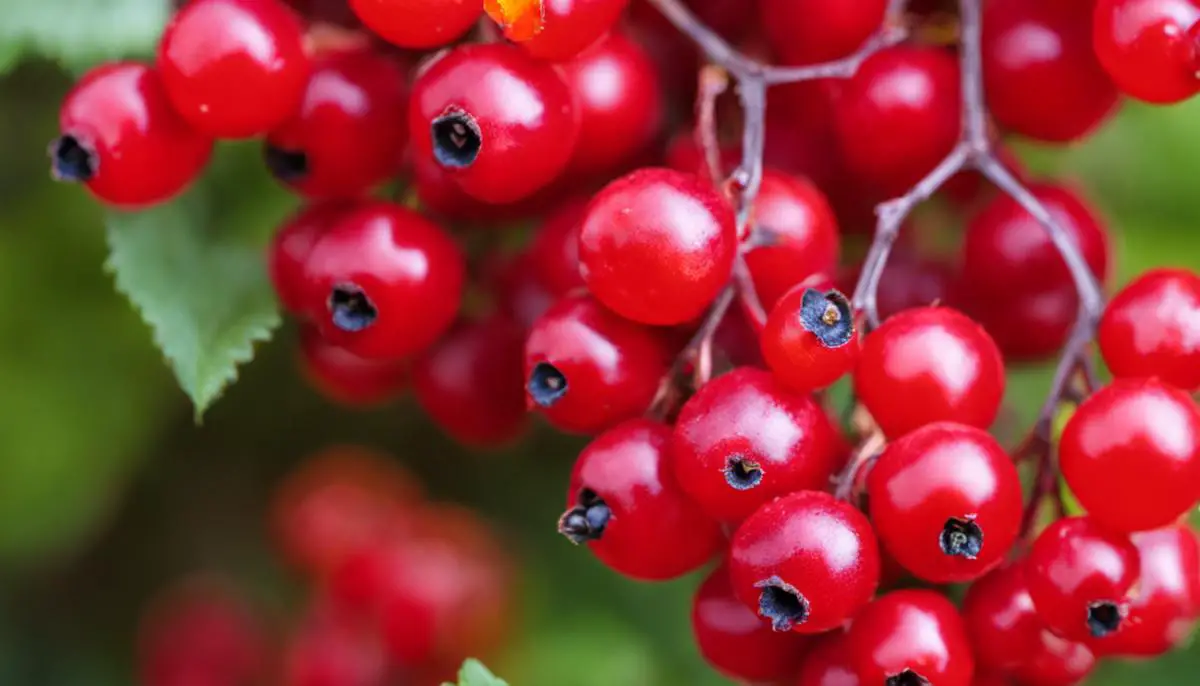
Planting and Growing Barberries
Getting Started with a Barberries Plant
For enthusiasts wishing to introduce the barberries plant into their hobby, the first step involves acquiring the plant. Seed purchases online or at a local gardening store commonly get the job done, although it’s critical to choose a variety that synchronizes with your regional climate and soil type. If you have access to an existing plant, propagation through cuttings offers another viable method. Late spring or early summer make the ideal times for taking cuttings for propagation.
Preparing the Ground
The next step is to prepare the ground where you will be planting the barberries. Choose a sunny spot, as barberries do best in full sunlight. However, they can tolerate light shade. The soil should be well-drained and enriched with organic matter. The plant prefers a pH level around 6.0 to 7.5. Prior to planting, remove any weeds or other plants from the area, and loosen the soil with a garden fork or tiller to give the barberry plant room to establish its root system.
Planting the Barberries
When planting barberries, dig a hole that is twice as wide and the same depth as the root ball of the plant. Place the plant in the hole ensuring that the top of the root ball is level with the ground surface. Backfill the hole with the removed soil, firming it gently around the root ball. Ensure the plant is upright and water thoroughly following planting.
Routine Care Procedures
Routine care for barberries includes regular watering, especially during dry periods. However, they can tolerate drought once established. Pruning is typically done in late winter or early spring before new growth begins. Remove any dead or damaged branches, and reshape the plant as required.
Pest and Disease Prevention
Barberries plants are relatively resistant to disease and pests. However, they can be susceptible to fungal diseases if the site is too damp. Insects such as aphids, scale, and barberry webworm may also be an issue. Regular monitoring and prompt treatment can help keep the plants healthy. Use a garden hose to spray off aphids, or use insecticidal soap for heavier infestations. For fungal diseases, improved air circulation and the application of appropriate fungicides can help.
Re-Planting Barberries
Barberries can be transplanted if necessary. This process requires you to carefully dig around the plant, avoiding damage to the root system, and replant it in a properly prepared hole at a new site.
Understanding the Ideal Seasons for Barberries Planting and Harvest
Spring and fall are typically recognized as the superior seasons for planting barberries due to their dormant state during these periods. Planting in the fall gives the advantage of allowing the plant to establish its roots before the onset of winter. On the other hand, spring planting leverages the benefit of the warmer soil temperatures that stimulate root growth. For those who seek to utilize the vibrant berries of the barberries, harvesting usually takes place in the late summer or early fall, when they have fully ripened to a radiant red. These berries can then be put to different culinary uses.
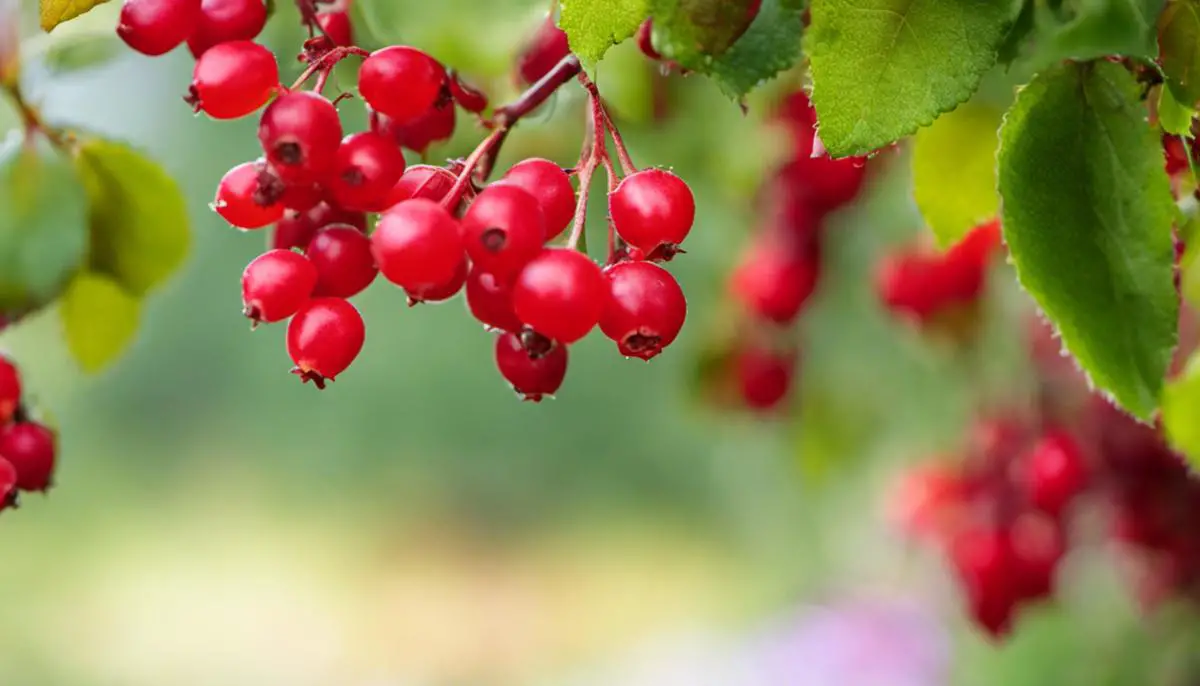
Health Benefits and Culinary Uses of Barberries
Unraveling the Nutritional Benefits of Barberries
Sporting a host of essential nutrients and beneficial compounds, barberries are a stellar inclusion in a health-conscious diet. Despite being low in calories, these fiery red berries abound in fiber, vitamin C, and antioxidants. For example, one may achieve 25% of the daily recommended quota of vitamin C by consuming a one-cup serving of fresh barberries. Their nutritional profile further extends to traces of other elements like vitamin B complex, calcium, potassium, iron, and zinc.
Health Benefits of Barberries
The significant health benefits associated with barberries include boosting immune system function, improving digestive health, and reducing inflammation. Its high vitamin C content aids in boosting immunity and promotes healthy skin. The fiber in barberries helps regulate digestive system function, prevent constipation, and maintain a healthy weight. The antioxidants, on the other hand, play an important role in reducing inflammation and protecting cells against potential damage from harmful free radicals.
Moreover, some studies suggest that barberries may have antimicrobial properties, helping to fight against certain bacterial infections. Furthermore, barberries have also been linked to heart health by helping regulate blood pressure and cholesterol levels.
However, it’s also essential to understand the potential side effects of barberries. Some people may experience mild side effects like abdominal cramps or diarrhea. People under medication or those with chronic conditions should consult their healthcare provider before incorporating barberries into their diet.
Culinary Uses of Barberries
Barberries offer a unique mix of tart and sweet flavors, making them a versatile ingredient in a variety of dishes. They’re prominently used in Persian cuisine, where they’re often added to rice and poultry dishes for a burst of color and flavor. They can also be simmered into a vibrant and tangy sauce or mixed into a refreshing salad.
Making a simple barberry sauce involves simmering the berries with sugar and water until they’re soft and the liquid has reduced. This sauce can be used as a topping for desserts or meats.
For a salad, the barberries can be mixed with chopped parsley, cucumbers, tomatoes, olive oil, and lemon juice, creating a refreshing and tangy side dish. Further, these berries can also be incorporated into breakfast dishes like oatmeal or granola for an antioxidant kickstart to your day!
Obtaining and Preserving Barberries
When you’re on the hunt for barberries, organic ones are generally the best choice. These berries should be plump and rich in color, not appearing shriveled or lifeless. With correct storage methods, you can ensure their longevity. Fresh barberries need to be stored in an airtight container and refrigerated, and they could last about two weeks. On the other hand, dried barberries should be kept in a cool, dark place, away from heat or dampness. If you wish to use them in your dishes, simply rehydrate them by soaking in warm water.
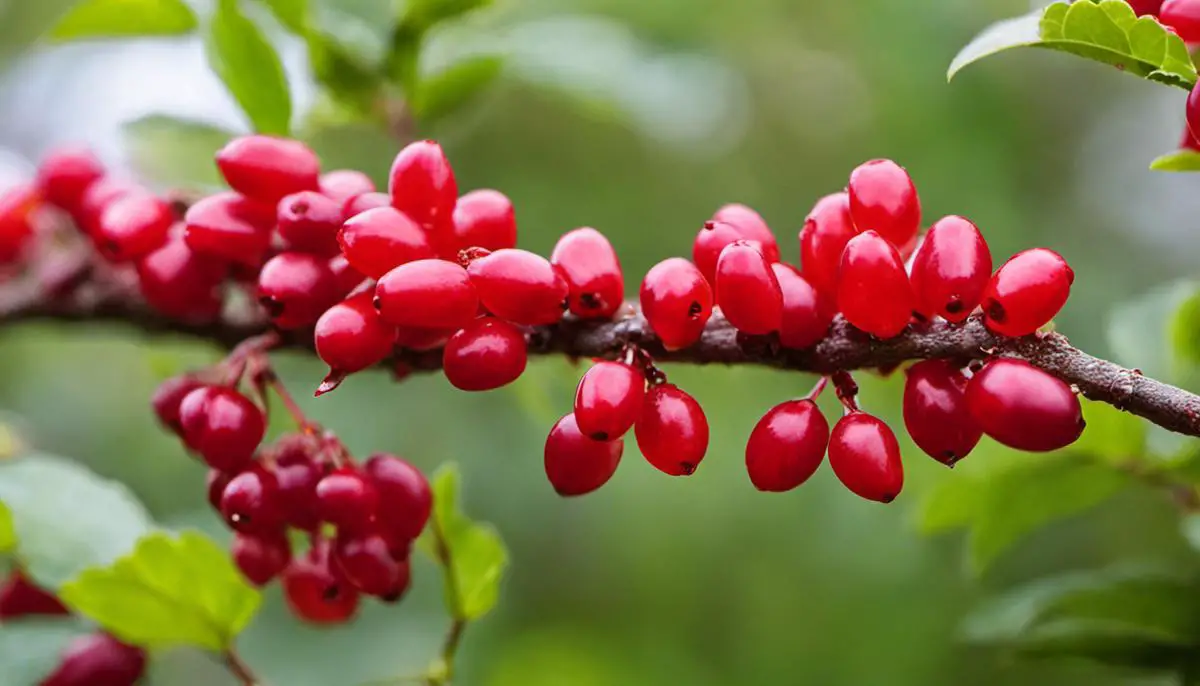
Barberries in Landscaping and Decoration
Using Barberries in Landscaping and Design
Barberries are highly cherished for their resilience and beauty, making them a popular component in a myriad of landscapes and gardens. Their vivid colors, stretching from burning red to golden yellow and deep purple, can dramatically enhance the visual appeal of any outdoor space, while their prickly thorns introduce a unique texture.
Owing to their thick growth habit, barberries make for perfect hedges, with their sharp thorns providing an effective natural deterrent. These hedges offer a vibrant backdrop against other plants and garden features, elevating the overall design. Quarry, sandy, clay, or loam, the adaptability of barberries extends to diverse soil conditions, making them a desirable option for a variety of landscaping endeavors.
In addition to their use in general landscaping, barberries can be used to infuse color and texture to rock gardens. Their knack for enduring aridity makes them a prime choice for this kind of garden. They can be strategically positioned among other striking or differently contrasting plant varieties to bring depth and a unique look to your rock garden design.
Barberries for Crafting Topiaries
The dense growth and small leaves of the barberry make it an ideal plant for crafting topiaries. Gardeners can prune barberries into a variety of shapes, such as spheres or cones, adding an artistic touch to any garden or patio space. The plant’s slow growth patterns allow for the maintenance of the desired shape over time.
Indoor Plantscaping with Barberries
Beyond beautiful outdoor spaces, barberries can also be used for indoor plantscaping. Smaller varieties of barberries can be grown indoors in containers, making for striking decorative houseplants. Indoor barberries can bring a pop of color to a room, complementing other design elements.
Visualizing Tools for Landscaping with Barberries
Various visualizing tools can assist garden enthusiasts or professional landscapers when incorporating barberries into their designs. Digital landscaping design software often includes a selection of barberry plants that users can visualize in a digital rendering of a landscape or garden. This helps in planning the plant arrangement to achieve the desired aesthetic effect.
To further enhance the charm of barberries in the setting, they can be paired with other plants with contrasting colors or textures. For instance, pairing golden barberries with plants featuring deep green or purple foliage can create a stunning visual contrast.
Care and Maintenance of Barberries for Landscaping
It’s essential to ensure proper care and maintenance to keep the barberries thriving in landscape designs. They require regular watering, particularly during dry weather conditions. However, they are tolerant of different soil types and can even thrive in less fertile soil. Pruning is necessary to maintain the desired shape and size, especially for hedge or topiary designs.
In conclusion, barberries offer great versatility for all types of landscaping and decoration needs, both indoors and outdoors. Their bright colors, adaptability, and durability make them an attractive choice for enhancing the aesthetic appeal of various spaces. Whether you’re creating a dense hedge, crafting a topiary, decorating a patio, or designing a rock garden, barberries can add a touch of beauty and sophistication to your environment.
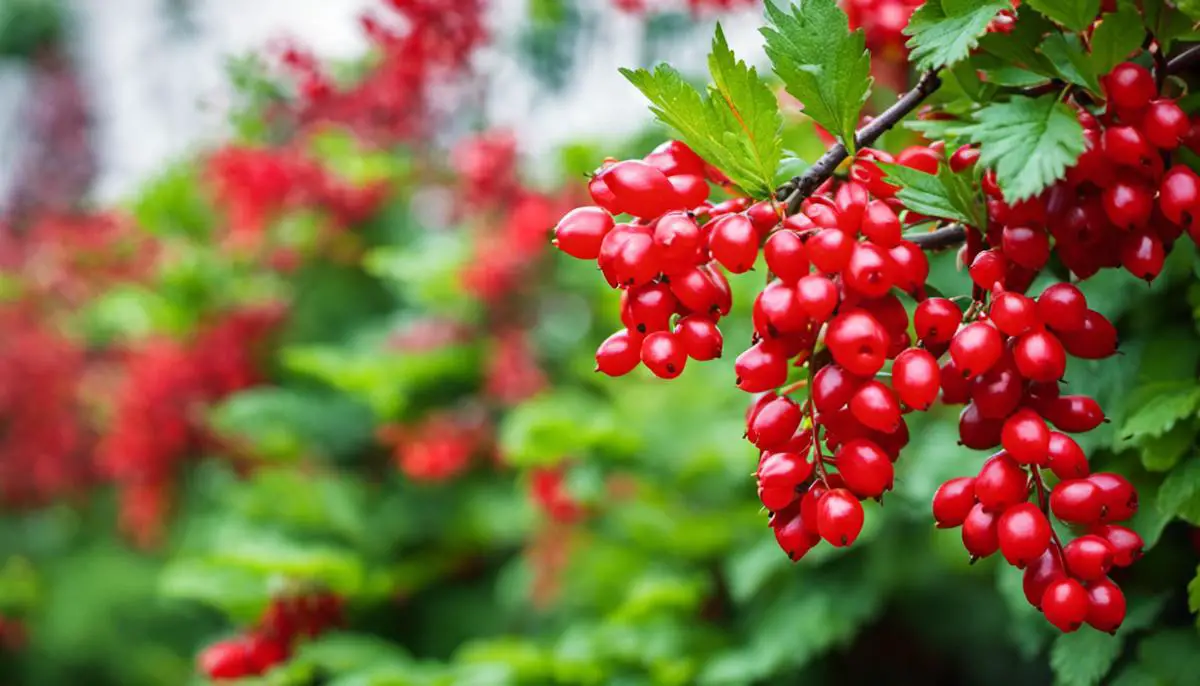
The vibrant, versatile barberries plant emerges as a marvel of nature with its immense growth potential, health benefits, and aesthetic appeal. From richly decorated gardens to innovative culinary delights, the influence of the barberries plant is substantial and widespread. It’s a testament to the incredible diversity of flora, painting a vivid picture of how meticulously we can integrate nature’s treasures into our daily lives. As we continue to explore and admire the world of plants, we also realize the importance of fostering a harmonious relationship with them for our own benefit. Ultimately, every seed planted, every leaf tended to, and every fruit reaped brings us one step closer to living more naturally and sustainabily.
